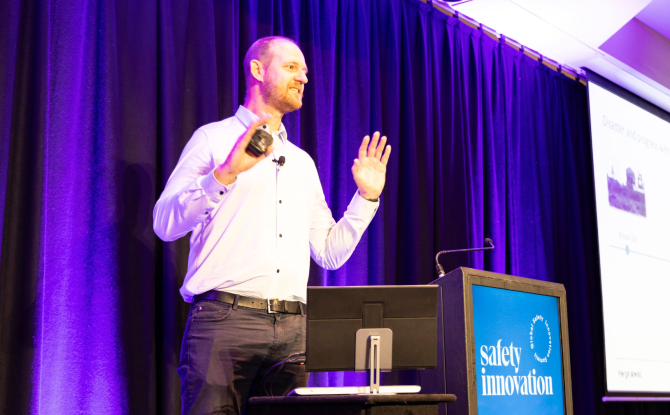
Navigating the Changing Tides of Safety Management: A Post-Global Safety Summit Reflection
The 2024 Global Safety Innovation Summit, recently held in Wollongong, NSW, was more than just an event; it was a crucible of ground-breaking ideas and a unique opportunity to explore modern philosophies and research in safety management and practice. Reflecting on the tide of insights that swept through the conference, we are clearly at a defining moment in reimagining our relationship and approach to workplace safety.
Some Action OHS Consulting staff attended the three-day conference – these are some of the highlights.
Highlighting Human and Organisational Performance
A standout theme at the summit was the exploration of Human and Organisational Performance (HOP), a conversation steered by respected Australian and international thought leaders.
Delving into the five principles of HOP:
- People make mistakes: Humans are imperfect, and errors are inevitable.
- Blame fixes nothing: Casting blame resolves nothing and impedes learning and progress.
- Learning is vital: Continuous learning is vital to the success of an organisation.
- Context drives behaviour: The context in which people operate heavily influences and drives their behaviour.
- Leadership response matters: How management responds can significantly shape outcomes and the capacity to learn and improve.
Whilst exploring the opportunities businesses, leaders, and teams have in:
- Refining safety: Having the capacity to prevent and respond to potential dangers and threats.
- Understanding normal: Studying what normal work looks like and reflecting that in safety practice.
- Asking and listening: Asking better questions works to help ensure better outcomes.
- Respectfully engaging frontline workers: asking what controls need to be present to do work safely
- Understanding that mistakes happen: Becoming less surprised by human error and failure and a lot more interested in (and a lot better at) operational learning
This refreshing perspective challenges us to abandon outmoded practices of assigning individual blame for workplace mishaps. It invites us to consider a more nuanced understanding of the complex web of factors moulding behaviours and decisions at work. By nurturing a culture rooted in leading and improvement, we can support operational excellence and create safe and reliable work environments.
The Imperative of Evidence-Based Safety Management
We live in times where technological advancements redefine how we interact with our surroundings, making the grounding of safety efforts in scientific evidence-based methodology non-negotiable.
Figures like Dr. David Provan and his contemporaries remind us that innovation must be anchored in solid, empirical research. Such a foundation is the bedrock of initiatives that deliver real-world impact and steer progressive change within the field. For example:
- For changes and innovations to have intended impact/success, they must be supported by safety science.
- Seemingly impossible goals can be effective – with the right conditions and resources to support experimentation.
- Be wary of the trap of inspirational innovation.
- What matters is how we change daily, getting apt at applying and learning from research and evidence.
- People design artefacts when they want patterns of action.
- The trap of managing management system artefacts and surface-level controls instead of gathering operational insights and ensuring all is working as intended.
Recognising the “Wicked Problem” of Safety
Despite the excitement surrounding novel frameworks and systems, we must not lose sight of the inherent complexities and paradoxes that safety presents. It’s an intricate puzzle — a “wicked problem” that demands keen vigilance and perpetual inquiry.
New views and contemporary safety management approaches are equally open to assumptions and corruption as traditional safety.
- What has corrupted health and safety in the past has the same potential with a new view of contemporary approaches to safety.
- Does the event demonstrate a one-off departure or systematic failure?
- Metric-based board reports need the same caution around them, as they don’t provide true insight.
- Safety frameworks designed in the context of the organisation, based on legislation and
- Being relentlessly curious and getting good at asking good questions is still key.
An Optimistic Horizon with Realistic Undertones
Looking ahead, a mix of optimism and measured realism colours our vision for the future of safety management. The horizon before us offers daunting challenges matched by equally potent prospects for innovation and improvement. Through fostering collaboration, valuing diversity, and encouraging a relentless drive for improvement, we can steer our course through the fluctuating waves of safety management with resolve and clarity.
If any of the ideas above have got you thinking, reach out to one of our consultants.
Let’s build a safer workplace together.



